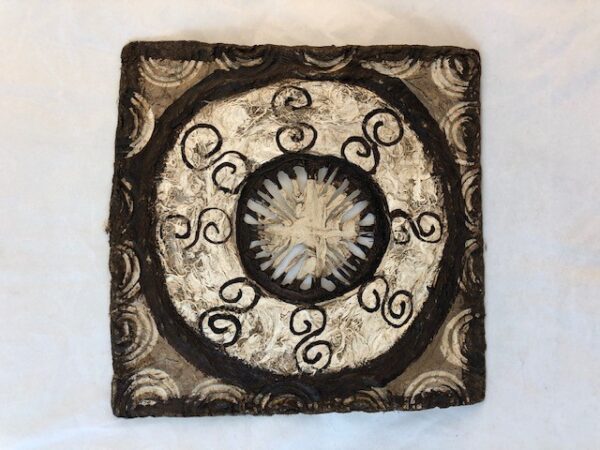
Otomi Mestizo culture
Early 21st century
Ficus inner-bark fibers, L. 19 cm x W. 7.5 mm x H. 19.5 cm
BFPC collection #2019.6
Amate paper is a traditional form of bark paper that is believed to have been developed by the Maya during the Mesoamerican Classic period (250-900 CE). The making of amate paper is labor-intensive, and the ancient Mesoamericans likewise highly valued amate and even gave paper as tribute and as offerings to the gods. The paper was also made into ritual garments and into cut-paper figures were used in rituals. As in other cultures, the handmade paper was used to record history, astronomy, the calendar, and mythologies, and it was formed into screenfold books.
The Spanish banned the creation of traditional amate paper because of its use in Mesoamerican ritual, and they actively destroyed all products made of this material, especially the screenfold books. The making of amate paper was preserved, however, by cultures such as the Aztec, the Otomí, and the Tepehua, who discreetly continued their native religious practices. Today amate paper continues to be made for rituals, but like this wall decoration, a version of traditional amate is also made into decorative items for the tourist-trade.
For more information, you may contact the researcher(s) noted in the title of this exhibit entry, or Dr. Billie Follensbee, the professor of the course, at BillieFollensbee@MissouriState.edu

